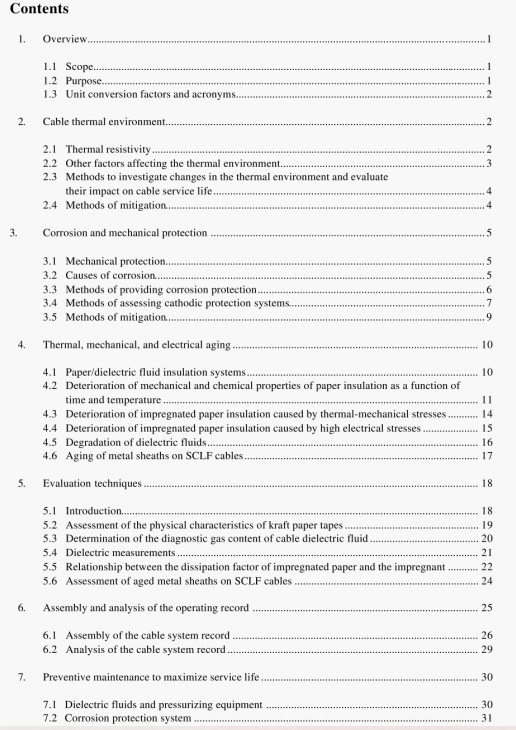IEEE Std 1425:2001 pdf free download.IEEE Guide for the Evaluation of the Remaining Life of Impregnated Paper-Insulated Transmission Cable Systems.
Initially. protective coatings of HPFF and HPGF cable pipes were usually made of asphalt mastic or reinforced coal tar enamel. More recently, they have been made predominantly of high density polyethylene. hut PVC and polypropylene have also been used (see NACI- Publication bA 172 (B721). SCLF cables, on the other hand, were not initially jacketed. Several jacketing materials have been tried since the early 1930s. and in the early l950s, reinforced neoprene jackets were in standard use. Since the early l964), polyethylene has become the predominant material for SCLF cable jackets in North America.
To ensure the quality of external jackets. electrical tests are performed with a coating discontinuity “holiday” tester at the factory prior to shipping and in the field prior to backfilling (see NACE Std RP0274.9X 1B761). In general. HPFF and HPGF cable pipes with asphalt mastic coatings were tested at 35kV dc. Those with reinforced coal tar coatings and those with polyethylene coatings were tested at 15kV dc. Because jacket thickness of SCLF cables varies from 2 mm to 3.6 mm depending on the cable diameter), the electrical test voltages used range from 3kV ac (7kV dc) to 11.5kV ac 28kV dc). depending on the type and thickness of the jacket.
However, jackets cannot be made perfectly insulating because small imperfections can be present in the material and holidays can be developed during factory application. Jackets can also be damaged by handling during storage, transportation. or installation, or developed later in service by transient overvoltages. by high operating temperatures. or by external agents such as chemicals in the ground. or by dig-ins. These factors cannot always be avoided, and currents may be able to flow into or out of the metallic enclosure. Because of this limitation and to ensure corrosion protection. jackets and coatings arc normally supplemented by a cathodic protection system. mainly in the case of HPFF and I-IPGF cables.
3.3.2 Cathodic protection
Many publications are available that cover the theoretical and practical aspects of cathodic protection design:
Husock D1501. NACE Std RPOI69-96 [B73]. NACE Technical Committee T-2 (B77), Parker (B(2, Pope [HKS]. to list a few.
Cathodic protection systems neutralize the corrosive efects of galvanic activity or stray dc currents at points where the jacket is breached by ensuring that current always flows from either a galvanic or an impressed current anode into the metallic enclosure (cathode). Two types of cathodic protection systems are in common use.
IEEE Std 1425:2001 pdf free download
